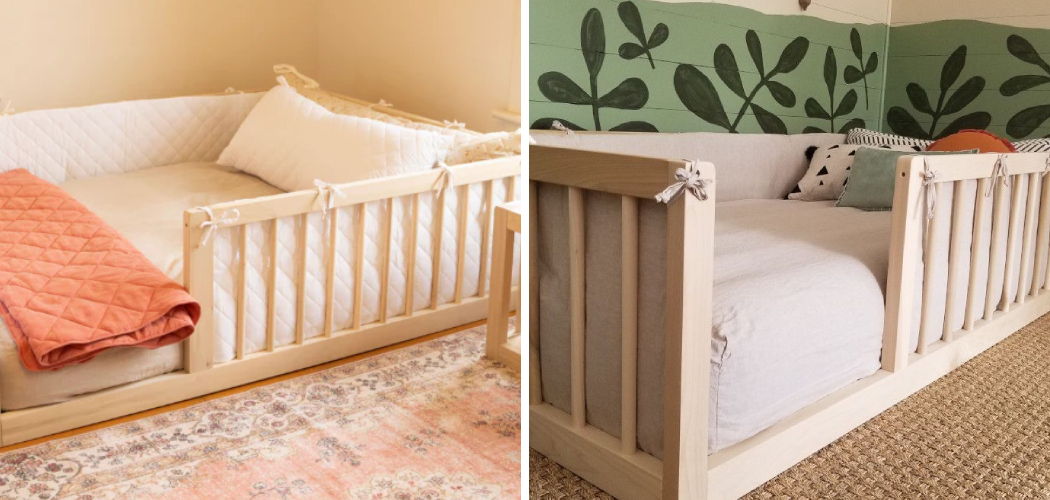A Montessori floor bed is a simple yet effective way to encourage independence and freedom of movement in young children. Originating from Dr. Maria Montessori’s educational philosophies, the concept promotes a child’s ability to explore their environment safely and at their own pace. Unlike traditional cribs, a Montessori floor bed is positioned at ground level, allowing children to get in and out of bed without assistance.
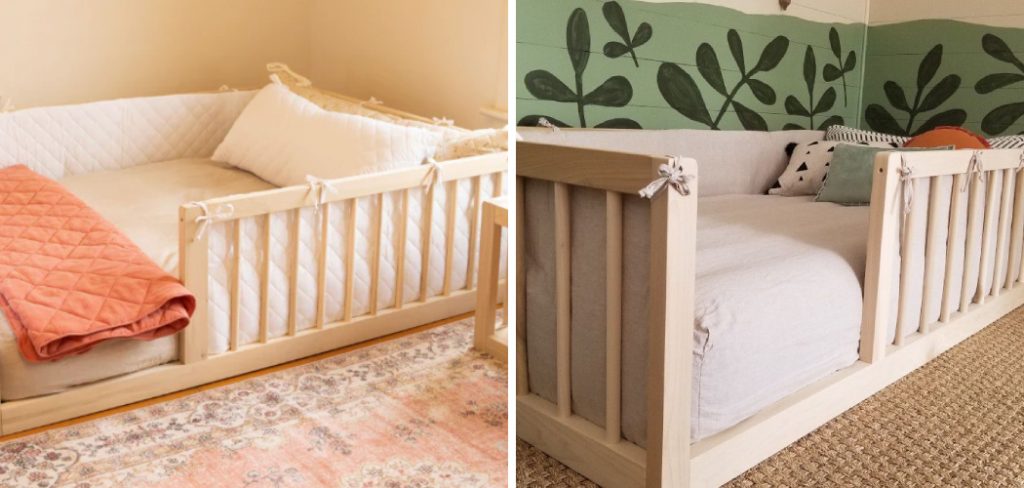
This setup not only fosters a sense of autonomy but also aligns with the principles of child-directed learning. In this guide on how to make montessori floor bed, we will walk you through the steps to create your own Montessori floor bed, emphasizing practicality and safety to ensure a nurturing sleep environment for your little one.
What is a Montessori Floor Bed?
A Montessori floor bed is essentially a mattress placed directly on the ground, with no crib or barrier surrounding it. It allows children to move freely in and out of bed as they please, promoting independence and self-regulation. This approach encourages young children to develop their motor skills and build confidence as they navigate their surroundings.
It’s important to note that a Montessori floor bed is not meant to replace a crib but rather be used as an alternative for children who are old enough and have the physical capability to use it safely. It is recommended for infants aged 6 months and up, depending on their individual development.
Materials Needed
A Twin-sized Mattress:
A twin-sized mattress, preferably made of natural materials such as cotton or wool, is the foundation of a Montessori floor bed. The size allows for enough space for the child to move around comfortably while still being close to the ground.
A Sturdy Bed Frame:
While some may opt to simply place the mattress on the floor, using a low and sturdy bed frame can provide added stability and support for your child’s safety. Make sure it is secure and does not wobble when pressure is applied.
Mattress Cover:
To protect your mattress from accidents and spills, consider investing in a waterproof mattress cover.
Soft Bedding:
Choose soft and lightweight bedding for your child, such as a cotton or muslin blanket and a breathable sheet. Avoid using pillows or heavy comforters, as they can pose a suffocation risk.
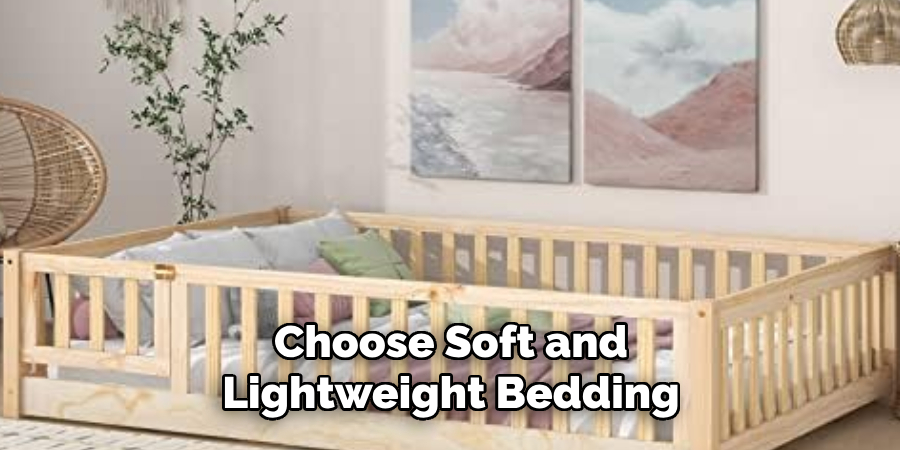
9 Steps on How to Make Montessori Floor Bed
Step 1: Choose the Location
Selecting the right location for your child’s Montessori floor bed is crucial. Look for a quiet, safe, and cozy corner in your home where your child can sleep undisturbed. Ensure the area is free from drafty windows, direct sunlight, and noise that could disrupt their rest.
It’s also important to childproof the surroundings by covering electrical outlets, securing heavy furniture to the wall, and removing any potential hazards. Creating a calm and serene atmosphere will help your child feel secure and comfortable in their new sleep environment.
Step 2: Prepare the Bed Frame
If using a bed frame, assemble it according to the manufacturer’s instructions and make sure it is sturdy and level. If you choose not to use a bed frame, place a non-slip mat or rug underneath the mattress to prevent it from moving around on the floor.
You can also add a few pillows or soft cushions around the bed frame to create a cozy and inviting sleep space for your child.
Step 3: Lay Down the Mattress
Place the mattress onto the bed frame or directly onto the floor if not using a frame. Ensure that it is centered and fits snugly within the designated area. Although it may be tempting, try not to make the bed too soft or plush as this could pose a suffocation hazard.
It’s best to avoid using bumper pads or any other barriers around the bed as they go against the Montessori philosophy of promoting freedom of movement. The mattress should be the only barrier between your child and the floor.
Step 4: Add Bedding
Layer a breathable sheet over the mattress, followed by a thin blanket or muslin cloth for added warmth and comfort. Avoid using loose sheets that could become entangled with your child while they sleep.
The bedding should be lightweight and easy to move, allowing your child to make their own sleeping arrangements as they please. Encouraging this level of autonomy will help them develop self-regulation skills from an early age.
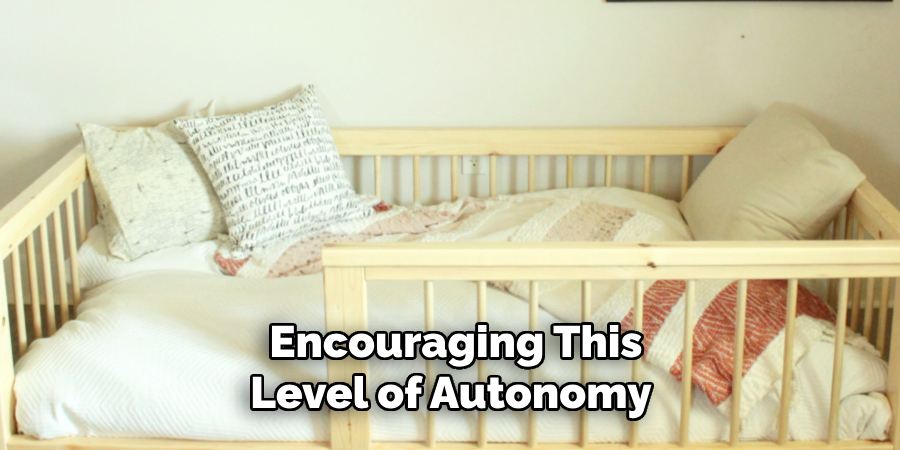
Step 5: Set Up a Sleep Area
To create a cozy and inviting sleep area for your child, you can add a soft rug or mat next to the bed for them to play and rest on. You can also place a low shelf nearby with a few books or toys for them to engage with before bedtime.
Including items that promote independent play and self-discovery aligns with the Montessori approach of child-directed learning.
Step 6: Introduce Your Child to Their New Bed
Before introducing your child to their new floor bed, involve them in the setup process if possible. This will help them feel more comfortable and familiar with their new sleep space.
When it’s time for bed, talk to your child about their new bed and encourage them to explore it on their own. This will help build a positive association with the bed and promote a sense of ownership over their sleeping arrangements.
Step 7: Be Patient
It’s important to remember that transitioning from a crib to a Montessori floor bed may take some time for your child to adjust. Be patient and allow them to explore and get comfortable in their own time.
If your child is having trouble falling asleep, you can sit near the bed and read or talk quietly until they drift off. This will provide reassurance and help them feel secure in their new sleep environment.
Step 8: Maintain a Consistent Bedtime Routine
Maintaining a consistent bedtime routine is essential for good sleep hygiene. This can include activities such as reading a book, singing a lullaby, or having a bath before bed.
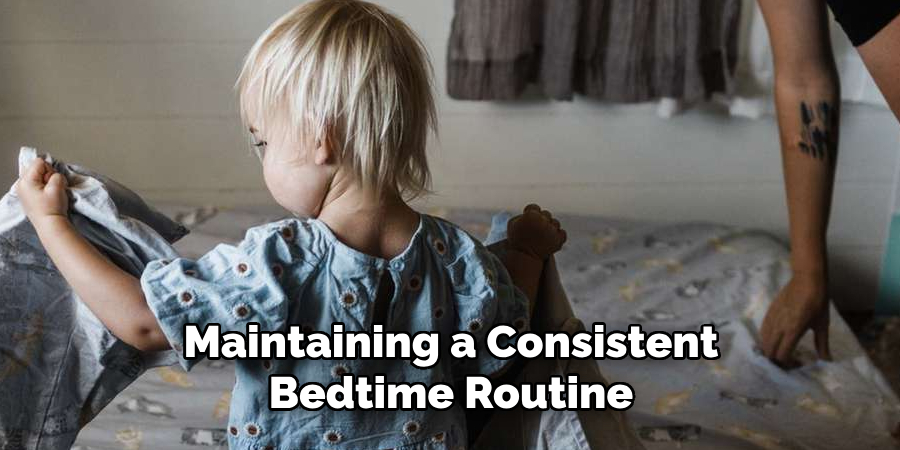
A predictable and calm routine will help your child wind down and prepare for sleep. It’s important to stick to this routine even when traveling or during other disruptions to maintain familiarity and promote better sleep habits.
Step 9: Monitor Safety Regularly
As with any sleeping arrangement, it’s important to regularly check on your child’s safety. Ensure the mattress is still centered and secure on the bed frame or floor and that there are no hazards in the surrounding area.
If your child is able to climb out of their bed, consider adding a safety gate or barrier at night for added security. Regularly monitoring safety will help ensure your child’s comfort and well-being while they sleep.
Following these steps on how to make montessori floor bed will help you create a safe, cozy, and welcoming Montessori floor bed for your child. Remember to be patient and consistent in your approach, and trust in the Montessori philosophy of promoting independence and natural development. Happy sleeping!
Frequently Asked Questions
Q: Is a Montessori Floor Bed Safe for My Child?
A: Yes, when set up correctly and monitored regularly, a Montessori floor bed can be a safe sleeping arrangement for your child. It’s important to childproof the surrounding area and regularly check for any potential hazards. The mattress should also be firm, and the bedding should be lightweight to avoid suffocation risks.
Q: What Age is Suitable for a Montessori Floor Bed?
A: The Montessori floor bed can be used from birth, but it’s most commonly recommended for children between 18 months and 3 years of age. This is when they have developed enough mobility and are transitioning out of cribs.
Q: Can I Still Use a Crib After Implementing a Montessori Floor Bed?
A: Yes, you can still use a crib for naps or as an alternative sleeping arrangement if needed. The goal of the Montessori floor bed is to promote independence and natural development, not to completely replace other sleeping options. However, it’s important to avoid switching back and forth between a crib and floor bed as this may confuse your child.
Q: Will My Child Fall Off the Bed?
A: Falling off the bed is a common concern for parents when transitioning to a Montessori floor bed. To prevent this, you can add a safety gate or barrier at night or place pillows on the sides of the bed as a cushion. It’s also important to teach your child how to safely get in and out of bed.
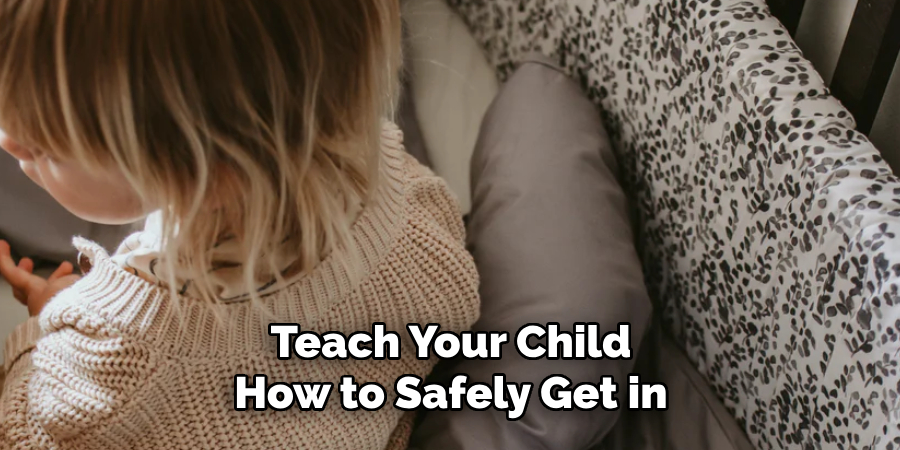
However, some children may still fall off occasionally, but with proper precautions and supervision, any injuries should be minor. Remember that falling is a natural part of a child’s development and can help them learn to navigate their surroundings.
Conclusion
Incorporating a Montessori floor bed into your child’s sleep routine can promote independence, freedom of movement, and peaceful rest. By following these steps on how to make montessori floor bed and maintaining consistency in their sleep environment, you can support your child’s development and create a positive sleeping experience for them.
Sweet dreams! So, when the time comes for your child to transition out of their crib, consider giving the Montessori floor bed a try for a unique and beneficial sleep experience. Happy sleeping!
